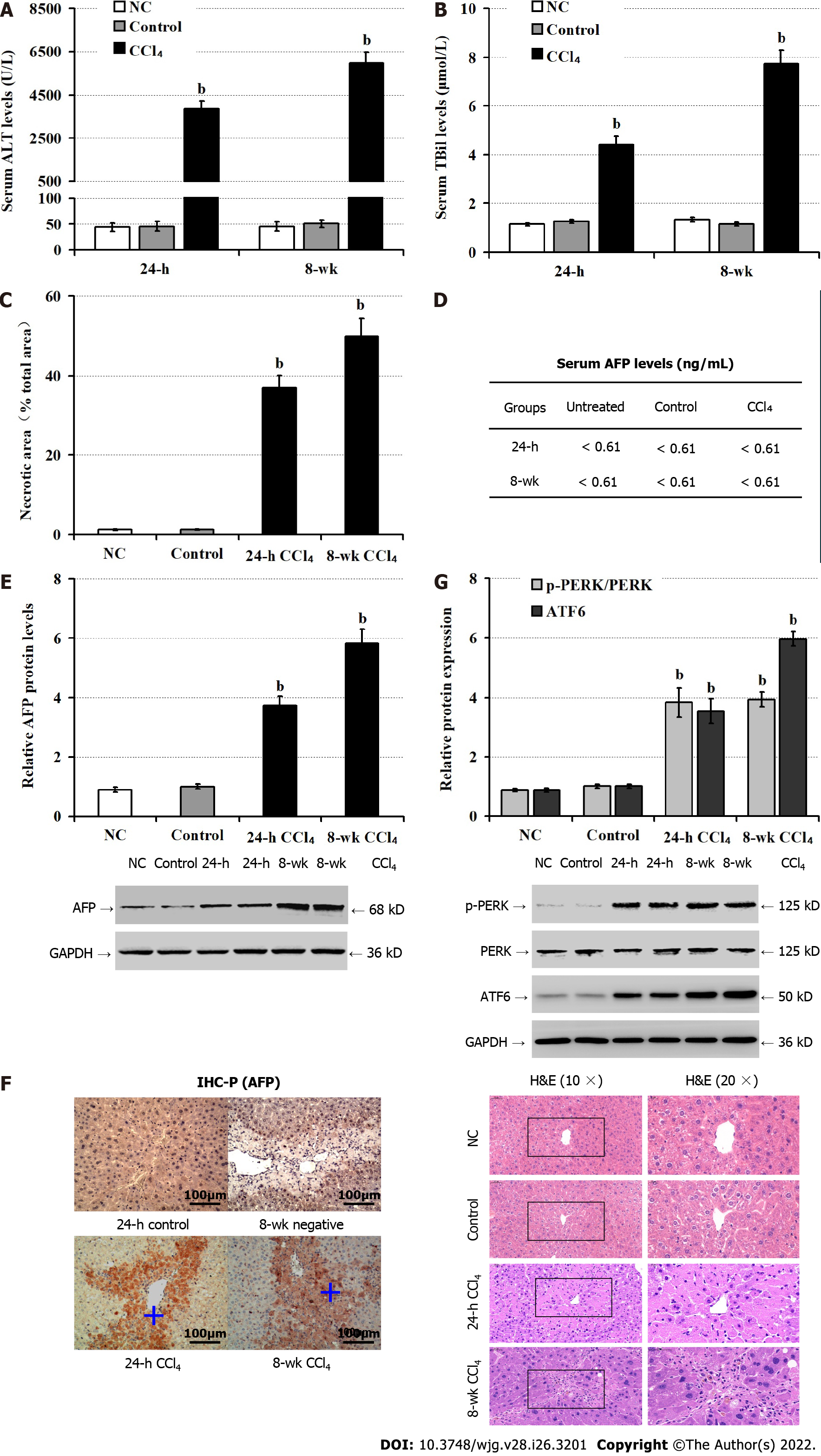Copyright
©The Author(s) 2022.
World J Gastroenterol. Jul 14, 2022; 28(26): 3201-3217
Published online Jul 14, 2022. doi: 10.3748/wjg.v28.i26.3201
Published online Jul 14, 2022. doi: 10.3748/wjg.v28.i26.3201
Figure 2 Administration with carbon tetrachloride induces alpha-fetoprotein expression, endoplasmic reticulum stress and liver injury in mice.
Male BALB/c mice were untreated (NC), or administrated with olive oil (control) or carbon tetrachloride (CCl4) for 24 h, or 8 wk. A: Serum alanine aminotransferase levels; B: Serum total bilirubin levels; C: Hematoxylin and eosin staining analysis of pathological changes in mouse liver tissues at 24-h and 8-wk post CCl4; D: Chemiluminescence immunoassay of serum alpha-fetoprotein (AFP) levels; E: Western blot analysis of the relative levels of AFP expression in liver tissues of mice; F: Immunohistochemical staining of AFP expression in liver tissue of mice at 24-h post CCl4, the positive expression of AFP was stained with brownish yellow and indicated by a plus sign; G: Western blot analysis of the relative levels of protein kinase R-like endoplasmic reticulum kinase phosphorylation and activating transcription factor-6 expression in liver tissues of mice. AFP: Alpha-fetoprotein; ALT: Alanine aminotransferase; ATF6: Activating transcription factor-6; CCl4: Carbon tetrachloride; H&E: Hematoxylin and eosin; PERK: Protein kinase R-like endoplasmic reticulum kinase; TBil: Total bilirubin. bP < 0.01 compared with the control group.
- Citation: Chen YF, Liu SY, Cheng QJ, Wang YJ, Chen S, Zhou YY, Liu X, Jiang ZG, Zhong WW, He YH. Intracellular alpha-fetoprotein mitigates hepatocyte apoptosis and necroptosis by inhibiting endoplasmic reticulum stress. World J Gastroenterol 2022; 28(26): 3201-3217
- URL: https://www.wjgnet.com/1007-9327/full/v28/i26/3201.htm
- DOI: https://dx.doi.org/10.3748/wjg.v28.i26.3201









